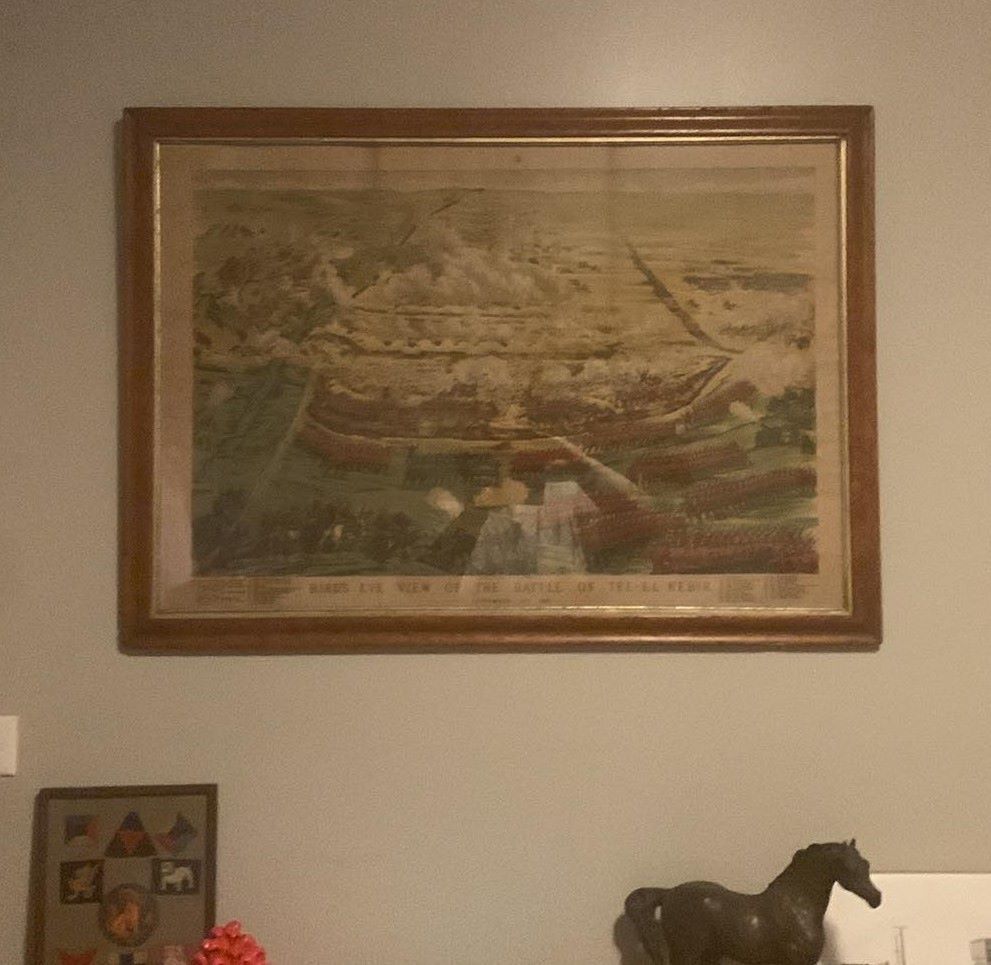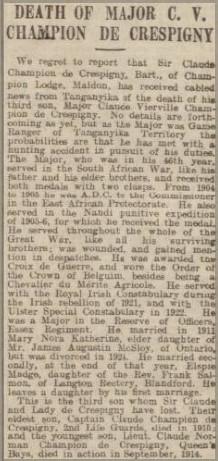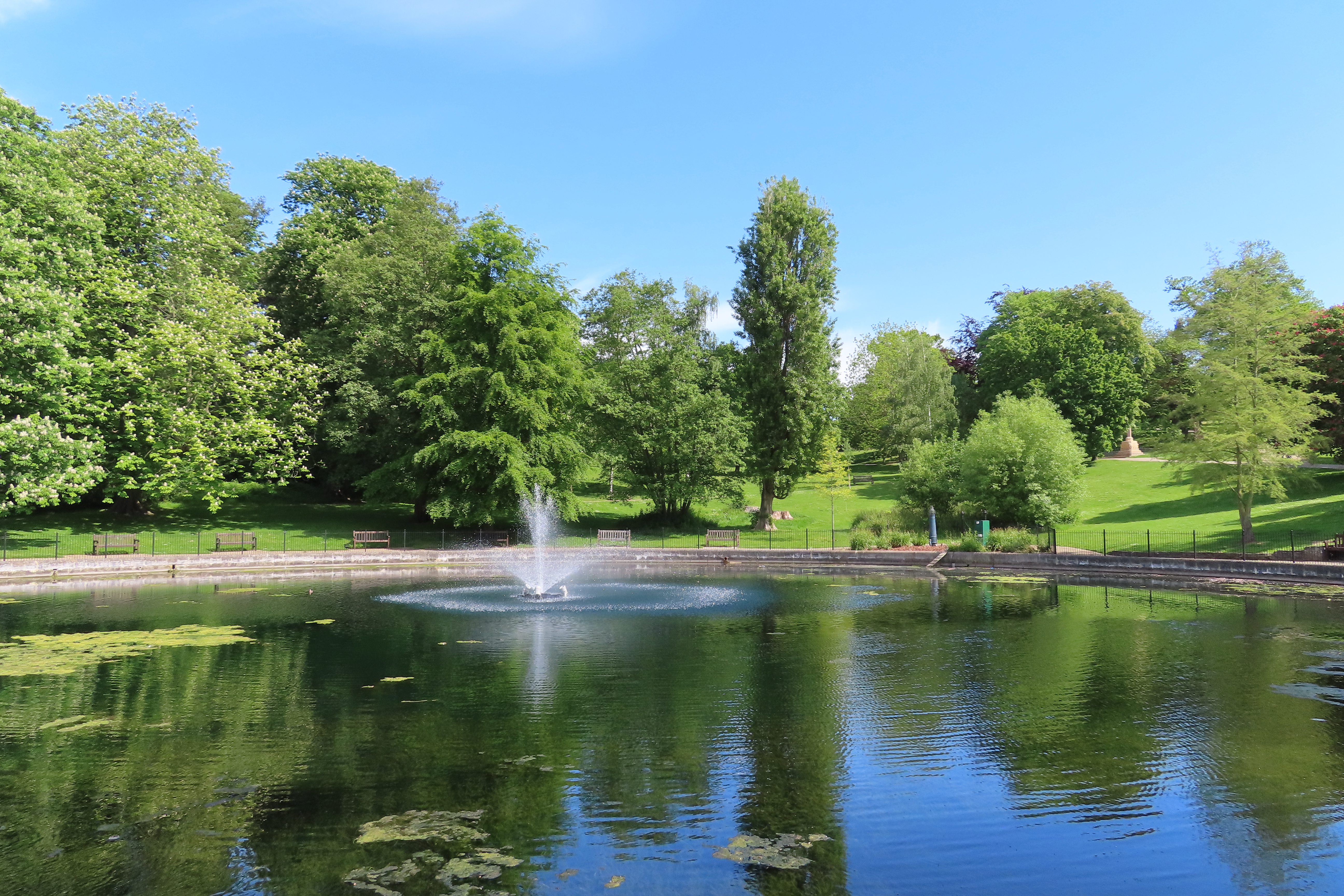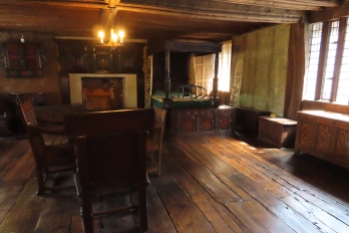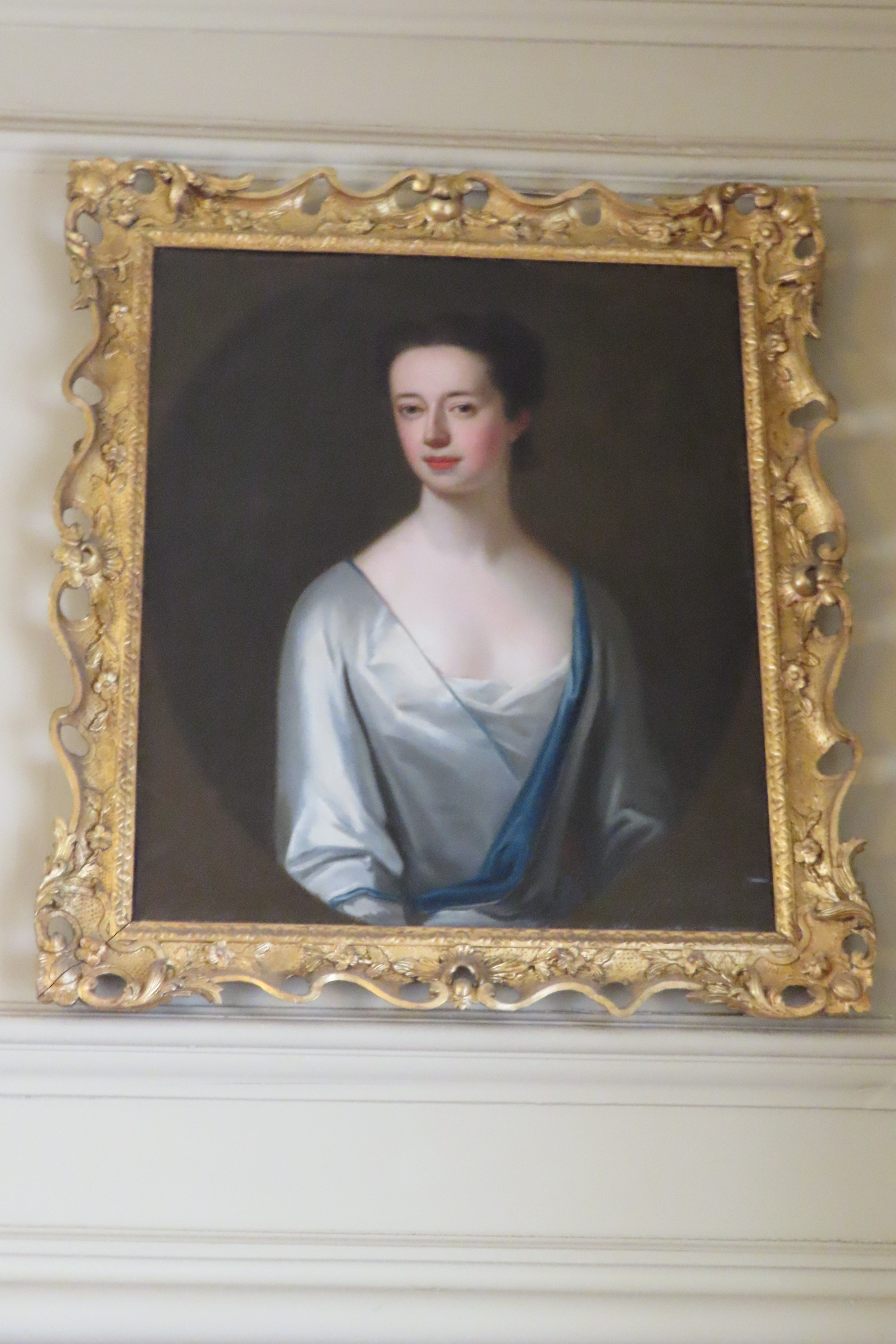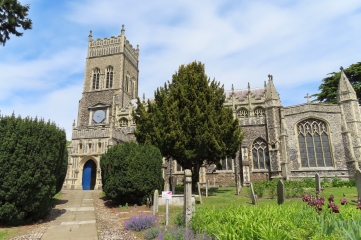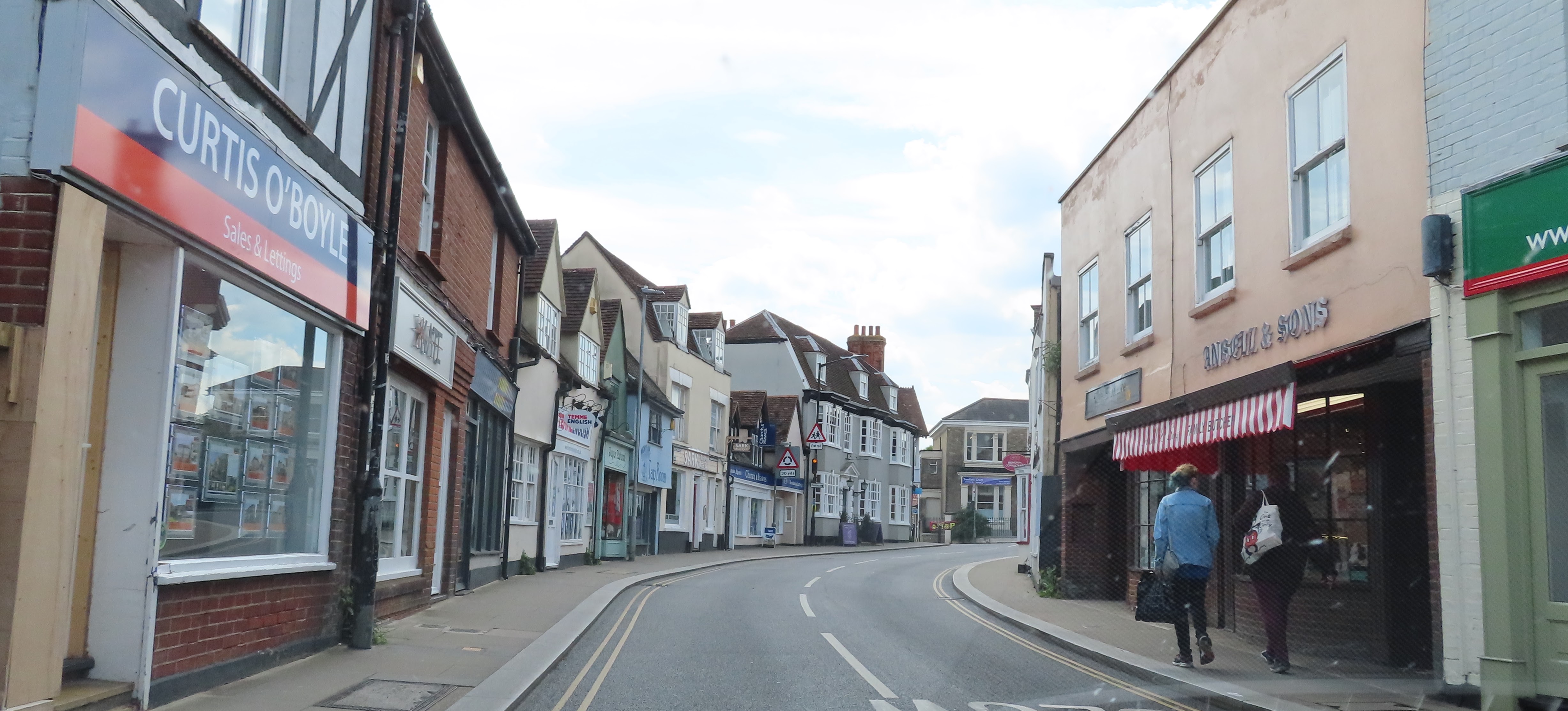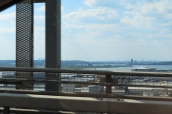When I was a girl, in a gloomy corridor of my grandmother’s house in Adelaide there was a lithograph of Tel-el-Kebir, the 1882 battle that won the Anglo-Egyptian War for the British. It probably came from my step-grandfather, George Symes, whose regiment, the Yorks and Lancs, had a part in the victory.

Zagazig is shown on the horizon. The Bengal infantry are to the left on the other side of the canal, the Cameronian Highlanders are in the front of the charge to the left. The 84th Regiment (York and Lancaster) are to the right, being led by an officer with a raised sword and next to the cannon.
In 1882 Alliston Toker (see L is for Languages) was D.A.A.G. [Deputy Assistant Adjutant General] to the Indian contingent at Tel-el-Kebir and subsequent pursuit to Zagazig; he was mentioned in despatches, receiving the brevet of Lieut.-Colonel and the 4th class of the Order of Osmanieh

The Anglo-Egyptian war was fought over who should control the Suez Canal.
From 1879 Colonel Ahmed ʻUrabi (or Orabi or Arabi) sought to depose the Khedive Tewfik Pasha and end British and French influence over the country. Egypt had been bankrupted by interest payments on loans incurred to fund an over-ambitious programme of infrastructure projects. The country’s finances were controlled by representatives of France and Britain.
In June 1882 there were riots in Alexandria, and the British bombarded the city.
The British were afraid they might lose control of Egypt, forfeiting loans and interest repayments. They were also concerned about the security of the Suez Canal which, since its opening in 1869, had become a vital part of the global communications of the British Empire.
Garnet Wolseley‘s 24,000 British and 7,000 Indian troops was the largest Imperial overseas force since the Crimean War in the 1850s. On his arrival Wolseley took control of the Suez Canal, secured his communications, created a strong base, built up stores, and concentrated his forces.
To defend Cairo the Egyptian forces dug in at Tel El Kebir, north of the railway and the Sweetwater Canal, both of which linked Cairo to Ismailia on the canal. The defences, though hastily prepared, included trenches and redoubts.
Wolseley planned to approach the position by night and attack frontally at dawn, hoping to achieve surprise, and a final, decisive victory.
Night marches are risky but the approach march of the main forces was made easier because the desert was almost flat and unobstructed.
Orders to prepare for battle were issued at 3pm on the afternoon of 12 September. One hundred rounds and two days’ rations were issued to every man. The orders instructed “Commanding officers are to be very particular about the fitness of water-carts, which will be filled and follow in rear of the battalions, and to make sure, by the personal inspection of company officers at 5 p.m. to-day, that every man has his water-bottle filled, if possible, with cold tea.”
The troops were told to maintain strict silence on the march; orders were to be given in whispers and rifles would be unloaded to avoid chance shots. No lights were to be shown; smoking was banned. Tents were left standing until dusk, campfires burning thereafter, so as not to alert the enemy to the fact that the British were on the move.
The advance from Ismailia began at 1.30am. An estimate of one-mile-per-hour average speed was calculated for a dawn attack. Navigation was by the stars. There were frequent halts to check direction and alignment. The march from the perspective of the 79th Queen’s Own Cameron Highlanders was described in the regimental history:
“The weird night march, long to be retained in the annals of the regiment and the country, can never be forgotten by those who took part in it ; the monotonous tramp, the sombre lines, the dimly discerned sea of desert faintly lighted by the stars, were at once ghostly and impressive. The pace was necessarily slow ; one halt was made, and shortly afterwards the directing star having become concealed another one was chosen, and the direction slightly changed to the right. The 42nd, 74th, and 75th, did not at once conform, and the consequence was that a halt had to be made as these regiments found themselves almost facing each other. This line was quickly and silently re-formed, and the advance continued. Just as dawn was breaking two shots were fired from the left front, and Private James Pollock of the regiment fell dead. It was now evident that the regiment was close upon the enemy. Bayonets were at once fixed.”
At 5.45 a.m. Wolseley’s troops were six hundred yards from the entrenchments and dawn was just breaking, when Egyptian sentries saw them and fired. The first shots were followed by multiple volleys from the entrenchments and by the artillery. British troops charged with the bayonet. The Highlanders charged “to the shrill music of the pipes, and cheering as they ran”.
Wolseley had written in his 1871 “Soldier’s Pocket-Book for Field Service”:
“A ringing cheer is inseparable from charging. I do not believe it possible to get a line in action to charge in silence ; and were it possible, the general who would deprive himself of the moral assistance it gives the assailants, must be an idiot. It encourages, lends nerve and confidence to an assailant : its very clamour makes men feel their strength as they realise the numbers that are charging with them. Nothing serves more to strike terror into a force that is charged than a loud ringing cheer, bespeaking confidence.”

The painting depicts the moment at first light when the Highland Brigade, having advanced within 150 yards of the Egyptian trenches and fixing bayonets as they went, stormed the enemy at bayonet-point.
The British advance was shielded from view by the smoke from the Egyptian artillery and rifles. Arriving in the trenches at the same time, all along the line, the resulting battle was over within an hour. The Egyptians fought strongly, Sir Archibald Alison, a Highland commander, reported in ”The Highland Brigade” by James Cromb, recalled:
‘Retiring up a line of works which we had taken in flank, they rallied at every re-entering angle, at every battery, at every redoubt, and renewed the fight. Four or five times we had to close upon them with bayonet, and I saw these men fighting hard when their officers were flying.’
It was a crushing defeat for the Egyptians. Official British figures gave a total of 57 British troops killed. Approximately two thousand Egyptians died. The British army had more casualties due to heatstroke than enemy action.
British cavalry pursued the broken enemy towards Cairo, which was undefended.
The regimental history of the 79th states:
“At 4.30 p.m. the same day the regiment, with the 74th and 75th, marched about five miles towards Zagazig and bivouacked for the night. The following day it moved on to Zagazig, 13 miles distant. On entering Zagazig, about 6 p.m., the 72nd Highlanders were seen encamped on the other side of the canal, and raised many a cheer as the regiment passed. They formed part of the Indian contingent, and had pushed on in front of the Highland brigade.”



Zagazig, is situated in the eastern part of the Nile delta. It is just under 60 km west of Tel el Kebir and 70 km north of Cairo. Many fugitives from the battle fled there.
Organised Egyptian resistance collapsed after Tel el-Kebir and the puppet regime of the Khedive was restored by the British. ʻUrabi was captured and eventually exiled to the British colony of Ceylon (now Sri Lanka). Egypt became a British colony in all but name.
Also serving in the battle was Tyrrell Other William Champion de Crespigny (1859 – 1946), brother of the 4th baronet and a distant cousin. I wrote about him in ‘U for Unregistered in 2021‘.
Related posts and further reading
- Faulkner, Neil. “All Sir Garnet! The Battle of Tel El-Kebir, 13 September 1882.” Military History Monthly, the-past.com, 6 Nov. 2021, https://the-past.com/feature/all-sir-garnet/ . Accessed 15 Mar. 2023.
- Mackenzie, Thomas Arthur, et al. “Historical Records of the 79th Queen’s Own Cameron Highlanders.” 1887 pages 169 ff. retrieved from archive.org
- Wolseley, Garnet Joseph. “The Soldier’s Pocket-book for Field Service.” MacMillan and Co., 1871, page 249 retrieved through archive.org
- Cromb, James. “The Highland Brigade.” 1886, page 302 retrieved through Google Books
Wikitree:

